Following our series on coral host to famous critter subject, here is another important one, that everybody has high on their list of Holy Grail !
The host of the King of all critters, the Pygmy Seahorse, Hippocampus bargibanti.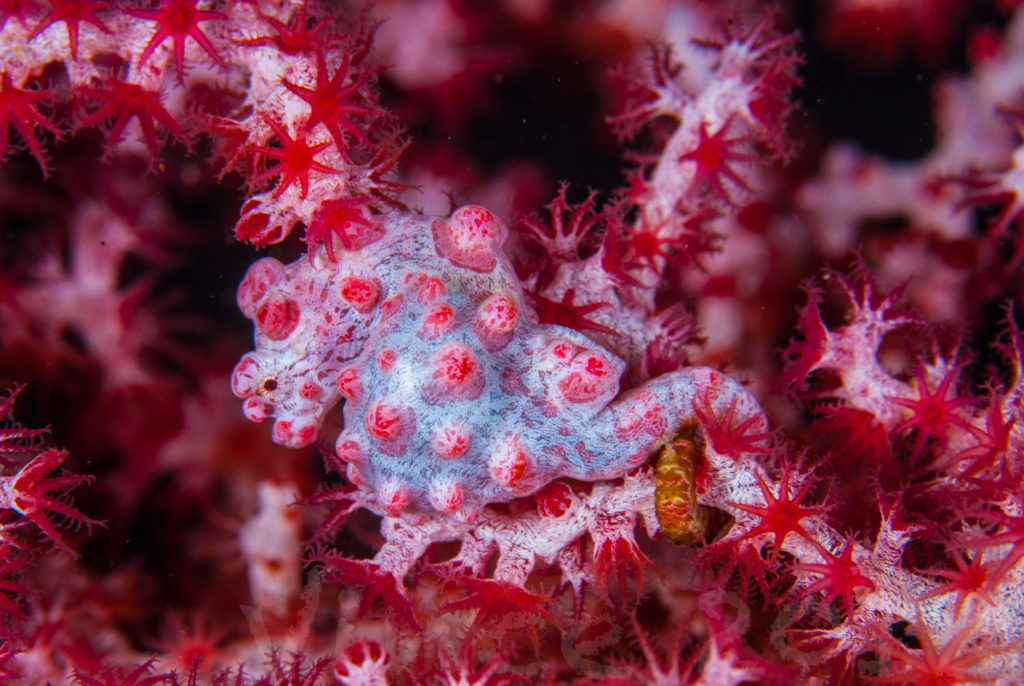
This little cutie lives exclusively on Sea Fan (Gorgonia) of the genus Muricella. the story goes that it was discovered by Georges Bargibant while collecting Sea Fans for experiments in the Public Aquarium of Noumea, New Caledonia in 1969.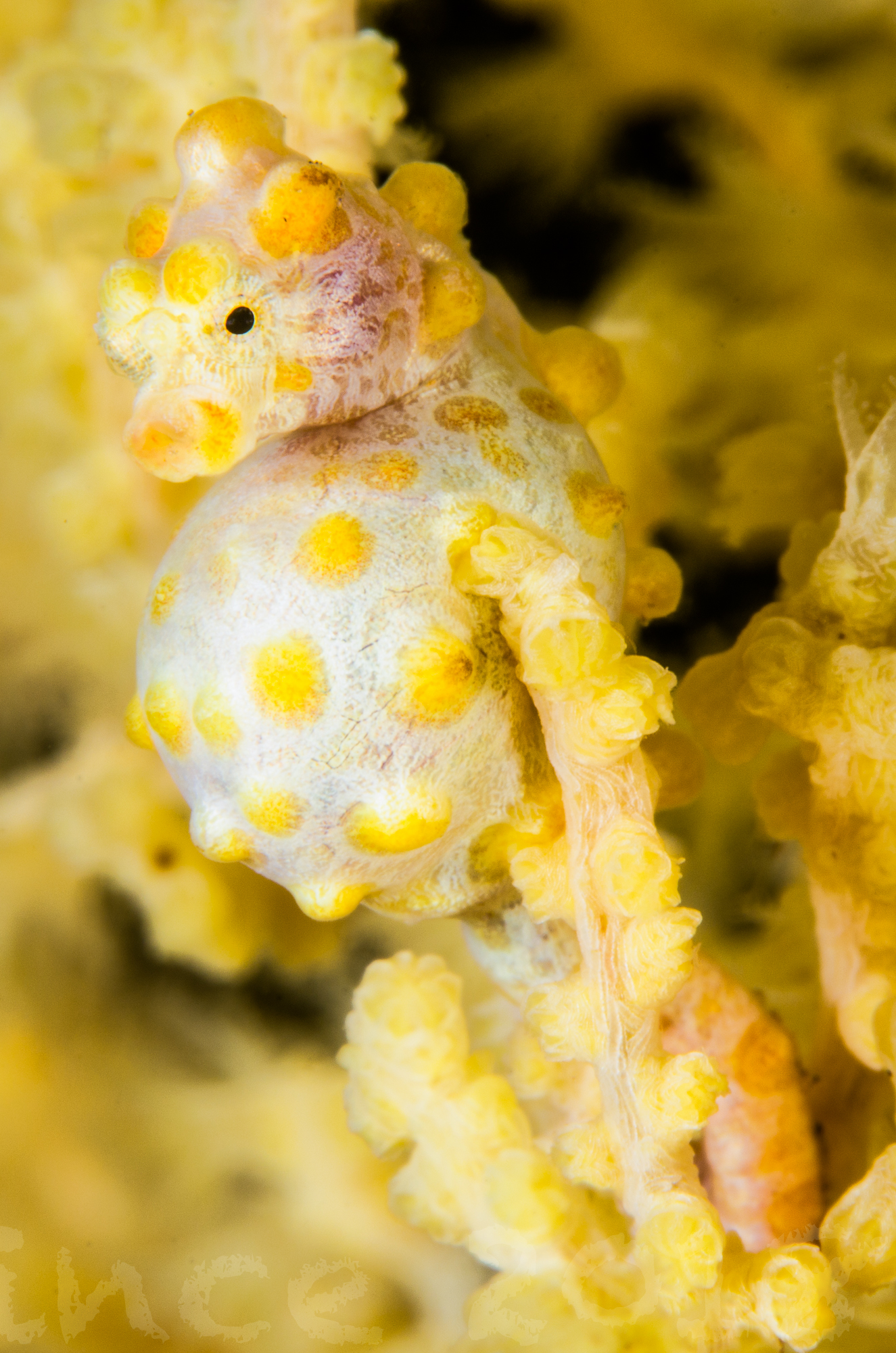
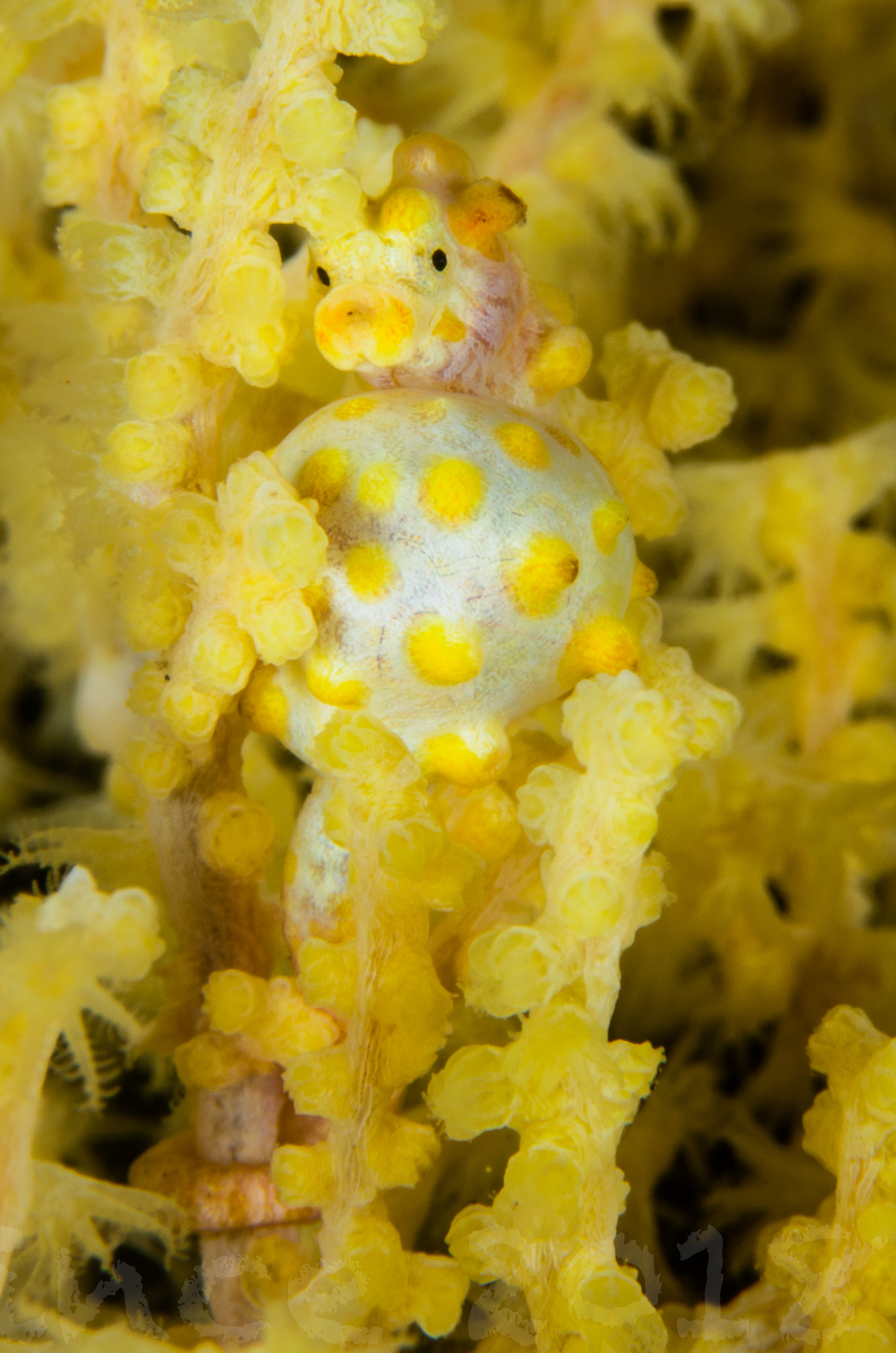
Sea fans are members of the Soft Coral family Octocorallia, and their characteristic is to have 8 tentacles symmetry on their polyps. Each polyp has 8 tentacles. One other characteristic of this time the Gorgonia genus, is to have an intern skeleton, made of a very particular material called Gorgonin, this material, of black color, give the strength to the coral and the flexibility at the same time.
Thus allowing the coral to resist high flow environment, which are usually the place with the most abundant food. The Sea Fan usually bend into the current up to a certain velocity, then resist. It usually takes up food from the back of the polyps, that are leaning into the flow.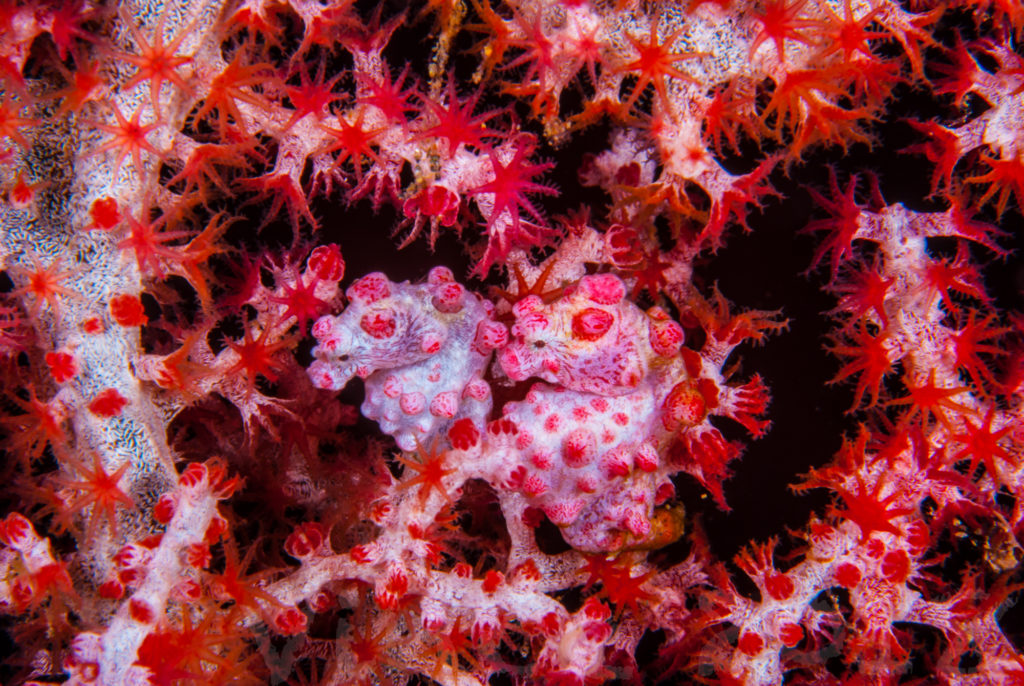
Muricella Sea Fans, often net-like, are quite easy to tell apart, but will require close examination. They are quite big, up to a meter diameter, they grow in 1 plan, perpendicular to the current. They exist into 2 mainly coloration which is Red and Yellow.
Their polyps are quite big and cannot completely retract into the skeleton, explaining the bumps on it, and also on the seahorse. With close examination of the numerous sclerites that rigidify the skeleton, are quite obvious on branches and on the polyps. Some of them are colored.
Even the seahorse has them included in its coloration. Branches and polyps are almost to a millimeter thick. Once you have learned to spot them a couple of time, you will recognize them from meters away.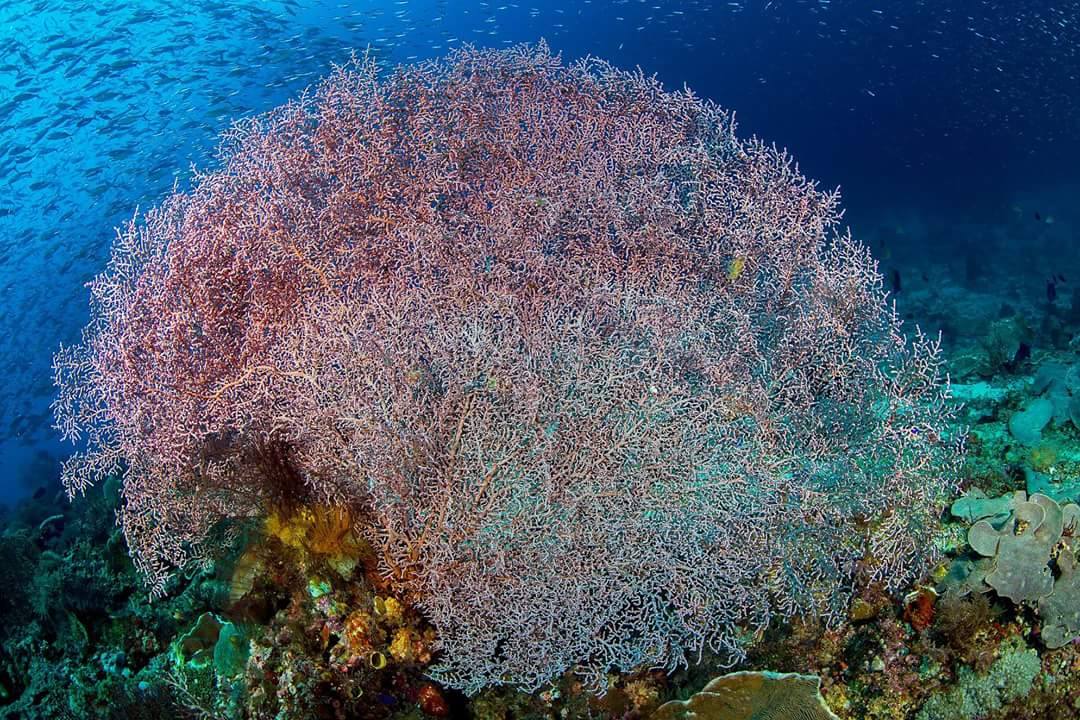
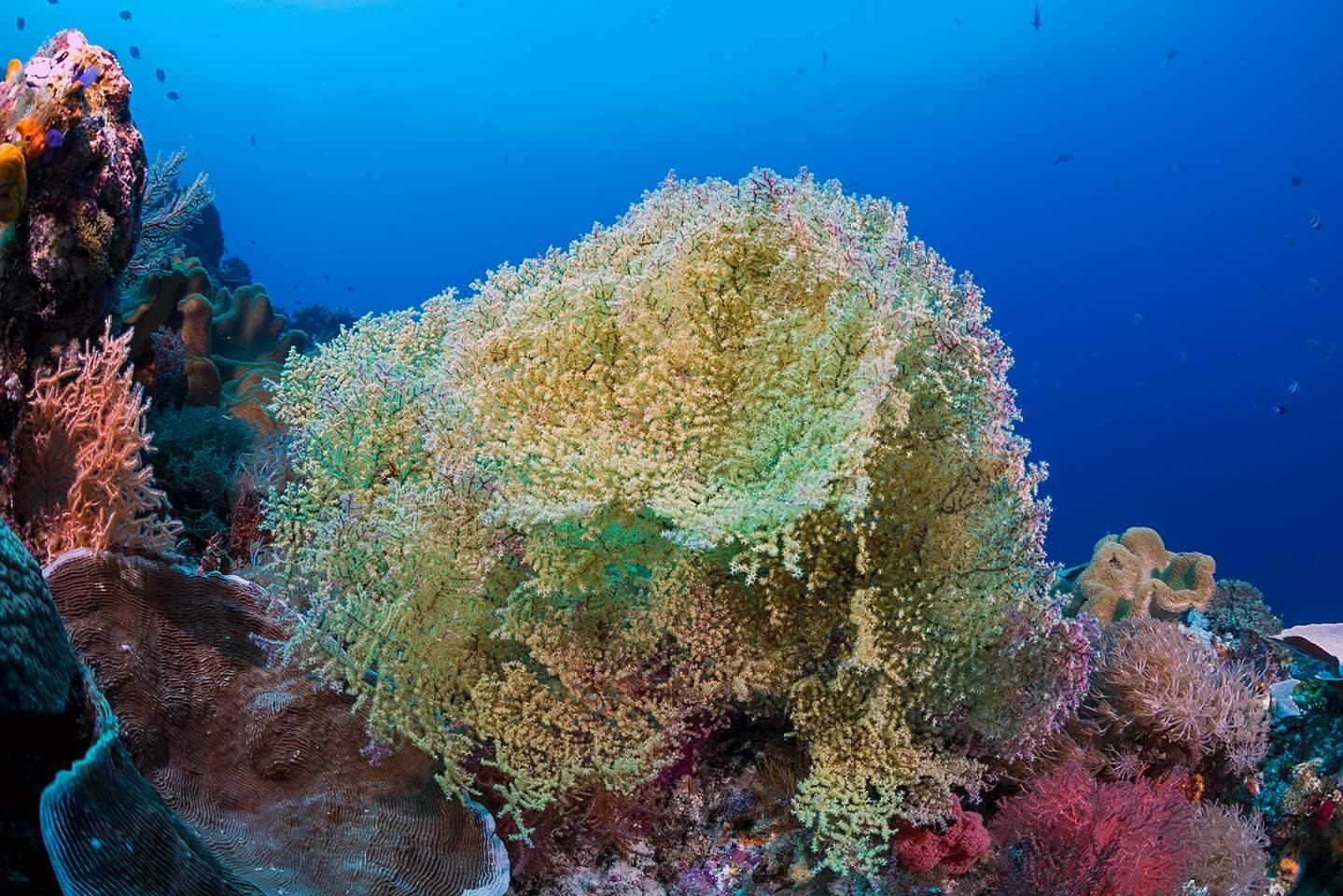
The pink version is from the species is usually M. plectana, and the yellow version is usuallyfrom M. paraplectana, but they can also live inside other species of Muricella. identification to the species level is almost impossible to the untrained, but identifying the genus is not too complicated.
The less than 2,4 cm long pygmy seahorse can be very tricky to spot among the Sea Fan, so some you need to know some tips if you want to fasten the painful process of going through the entire Sea Fan.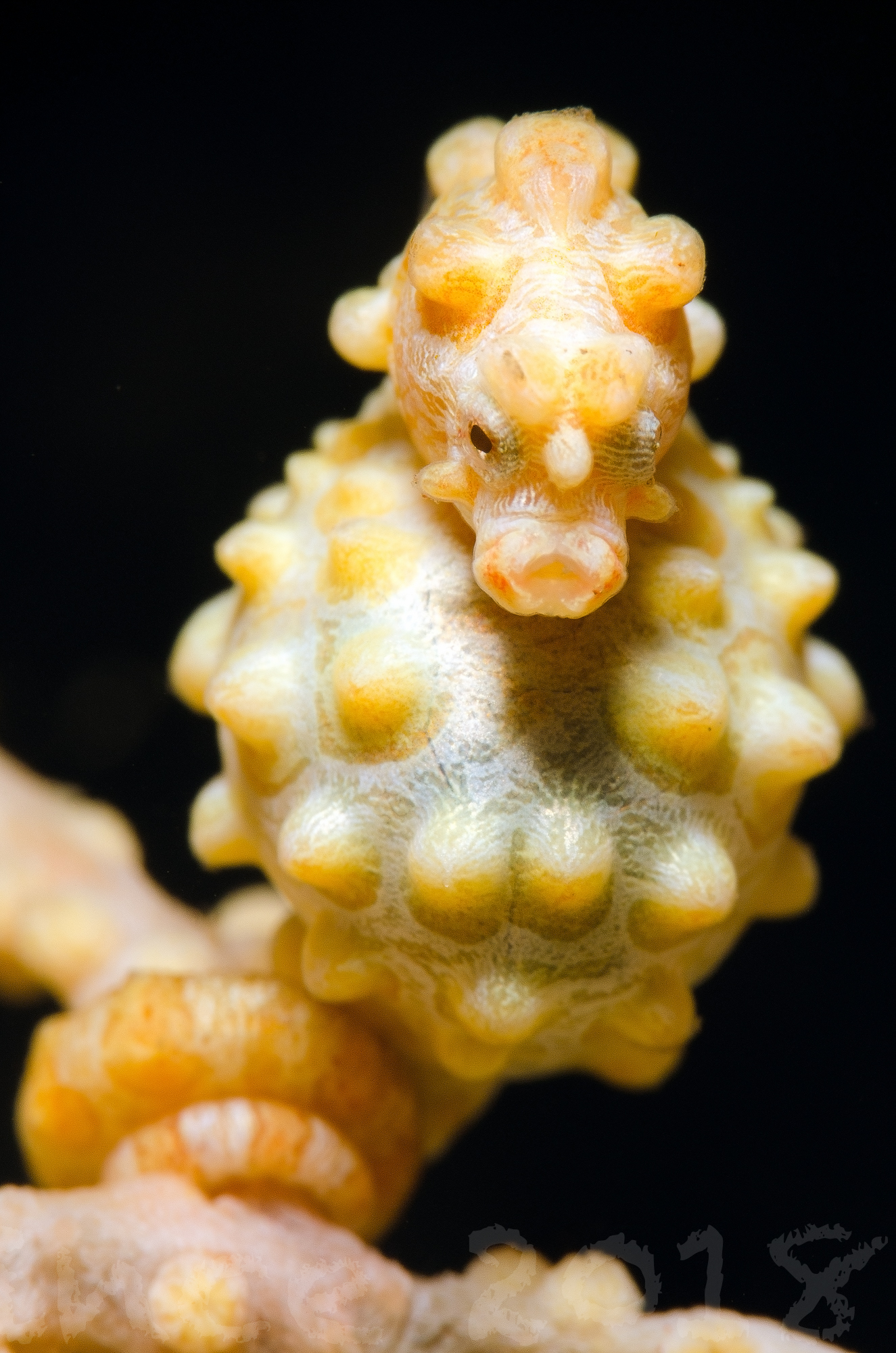
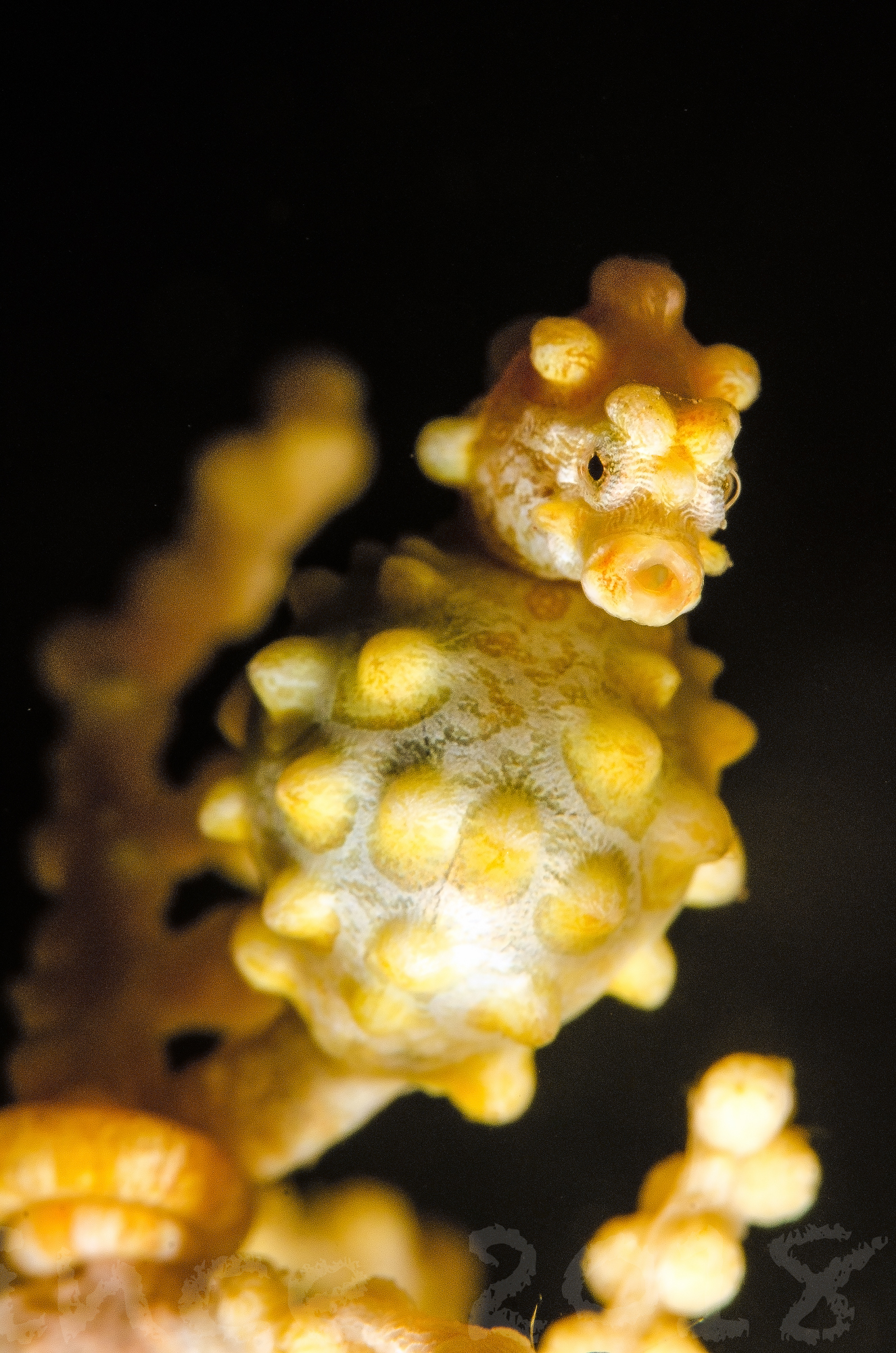
Start with a small Sea Fan that is known to have Seahorses in it. Trying your luck on a several meter wide Sea Fan will usually waste a dive.
It’s also easier on a Sea Fan that has its polyps closed, if the polyps are open, then it’s a lot bushier and the Seahorse is perfectly camouflaged and hidden in it. but please do not poke the coral to have it to close down its polyps.
Try to spot the tail curling around a branch.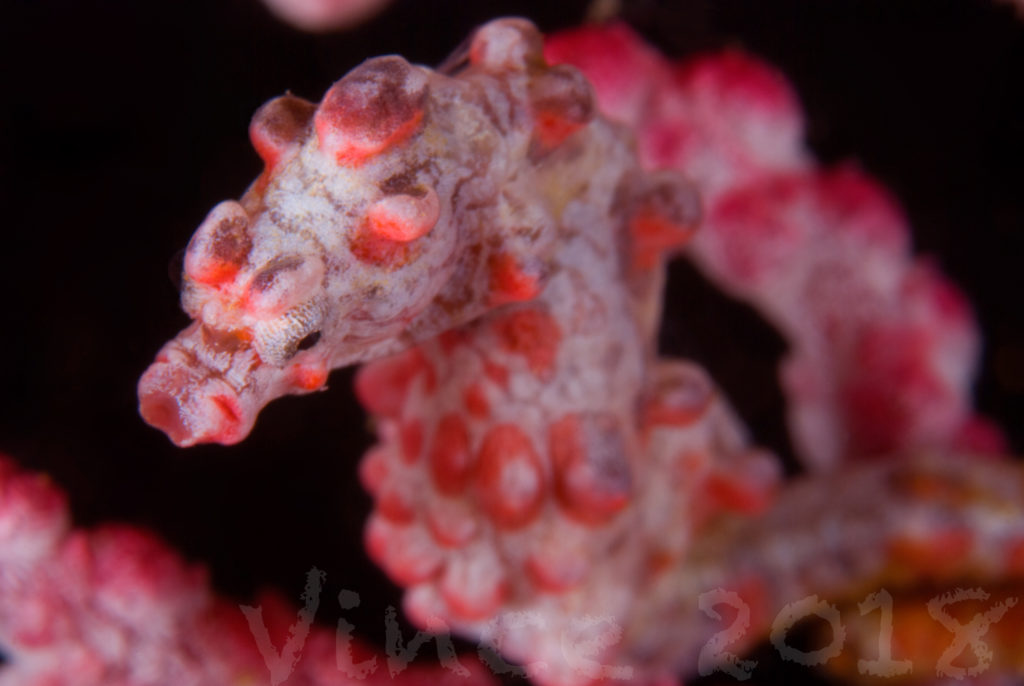
Try to spot pockets that usually form in the middle of the Sea Fan, as this is often the most protected place, where the Seahorse will rest.
During the day the Pygmy Seahorse, usually rest in these pockets, but at night, they become more active and can be found on the edge of the fan foraging for food.
Spotting the Corals, is only the start, with experience, you will learn to spot the Pygmy Seahorse, and with a lot more experience, you will learn to get the shot!
Muricella: Pygmy Kingdom !
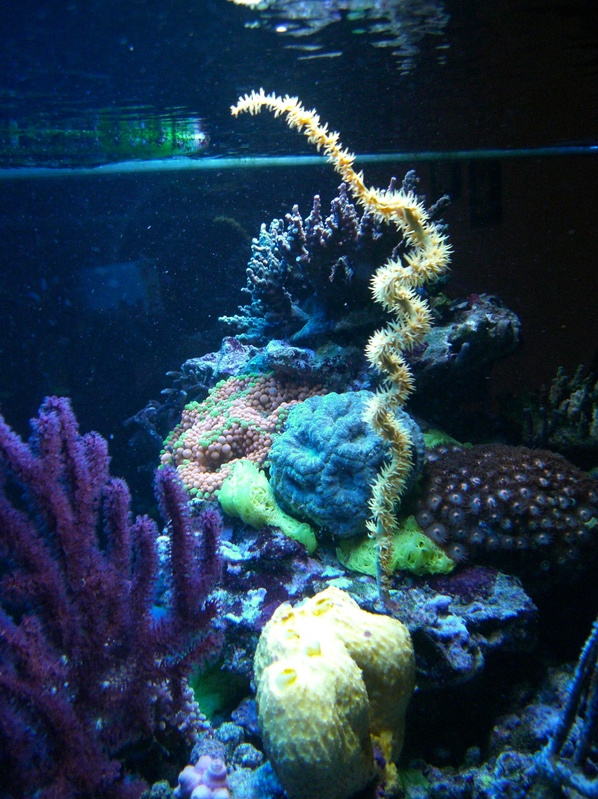
Vincent Chalias
Vincent is a coral passionate aquarist with extensive experience in the industry, travelling the world to learn about corals. His background is a master degree in Marine Aquaculture. He set up the first Indonesian Coral mariculture farms at the beginning of the century and spent over 20 years in Indonesia running them. He's been extensively diving and documenting corals all over the Indo-Pacific.
Share This
Previous Article


